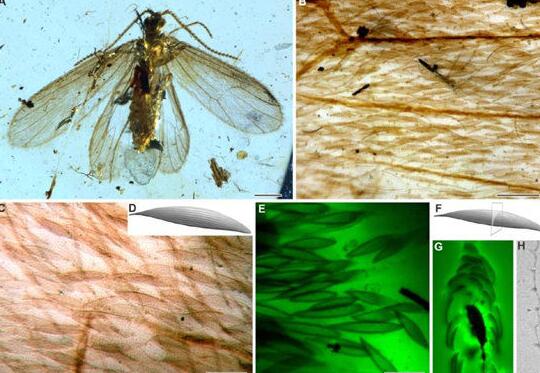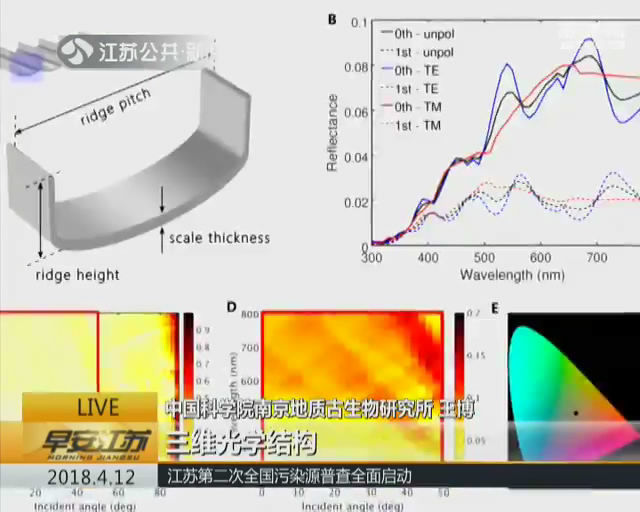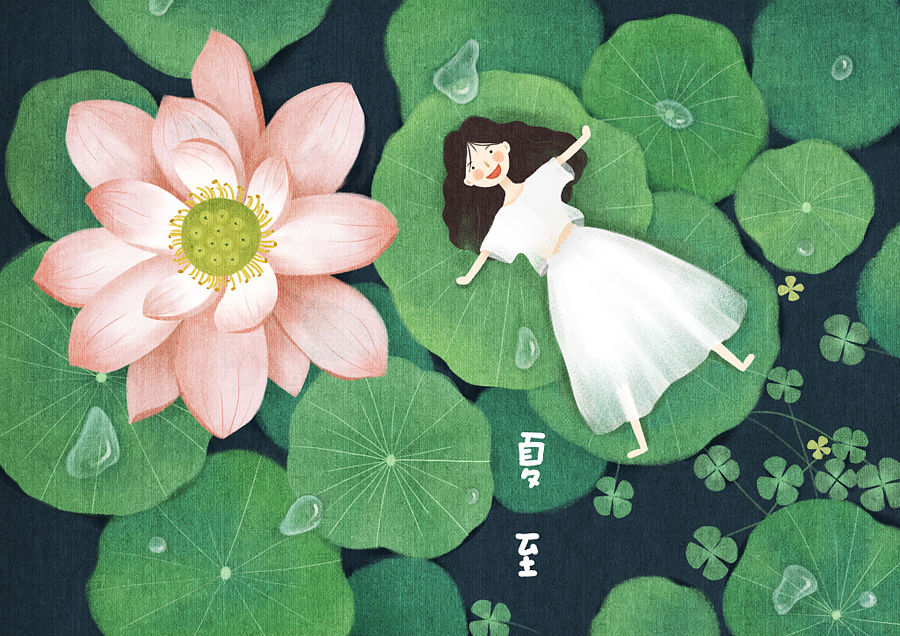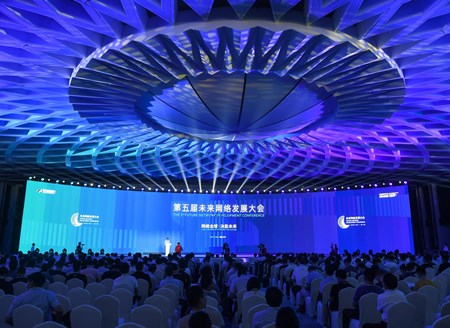An international team led by Chinese scientists has revealed the wing color of a 200-million-year-old insect via fossil scales.
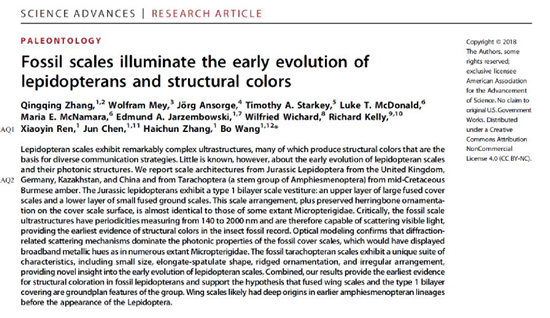
Fossilized remains of ancient species of animals can help paleontologists and scientists discover the hidden secrets regarding the existence of vivid species that lived on the Earth more than 100 million years ago. This allows the scientists to ascertain the structure, characteristics and other features of these species.
A team of international researchers comprising of Chinese, German, & British scientists recently underwent a successful research in order to discover the color of a 200-million-year-old insect for which, the fossil was found trapped in amber.
The study was conducted by scientists from Chinese Academy of Sciences, Nanjing Institute of Geology and Paleontology and other researchers.
The study, published on Wednesday in the journal Science Advances, found that tiny photonic structures of lepidopteron could produce metallic bronze to golden color appearances in the insect wings.
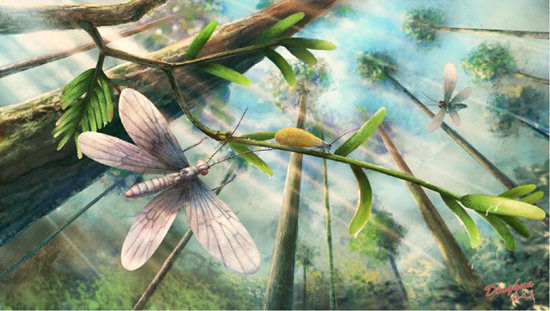
The researchers undertook to the task of determining the color of a Trichoptera fossil that was found trapped in the Burmese amber. The challenge was to determine the color which is an extremely difficult feat to achieve since the insect showed no signs of colors through pigmentation.
Structural colors in a myriad of animals and plants result from the wavelength-selective scattering of incident light which are typically more vibrant and visually arresting than those produced via pigmentation and are often multifunctional, playing important roles in intra-specific sexual signaling, aposematism and crypsis.
As per the study, the insects got its colors through structural arrangements which are common for Lepidoptera, an order which covers moths and butterflies.
These structures allow the insects to have rather distinguishing and diversifying vivid colors. As said, structural colors which are the result of structures made to allow the selective wavelength of incident light to scatter and produce vivid color is visually more stunning than the color produced via pigmentation.
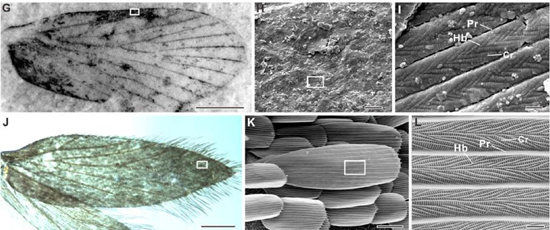
Moreover, these structural colors are multifunctional as it also allows the insects to perform functions such as crypsis, aposematism, and sexual signaling.
Researchers scaled architectures from Jurassic Lepidoptera from the United Kingdom, Germany, Kazakhstan and China, and Tarachoptera from mid-Cretaceous Burmese amber.
Using the ultra-structural parameters identified in Jurassic specimens, they demonstrated the use of optical modeling to describe the theoretical optical properties of the type-1 bilayer scale arrangement, thus providing the earliest evidence of structural colors in the insect fossil record.
The Jurassic lepidopterans exhibit a type-1 bilayer scale vestiture: an upper layer of large fused cover scales and a lower layer of small fused ground scales.
This scale arrangement, plus preserved herringbone ornamentation on the cover scale surface, is almost identical to those of some extant Micropterigidae.
Further, the fossil was found to have herringbone structure covering its upper layer which is a V-pattern weaving structure i.e. the same V-shaped structure repeated at regular intervals which results in structural colors.
Also, researchers found periodicities or structures that periodically repeated over ranging between 140 and 2,000 nanometers where the incident light falls on it and scatters a selected wavelength of light. The study found out that these insects would have produced metallic bronze to gold on color in its wings due to these tiny photonic structures as elaborated above.
Also, the fossil scale ultra-structures possess periodicities measuring from 140 to 2,000 nanometers and are therefore capable of scattering visible light, according to researchers.
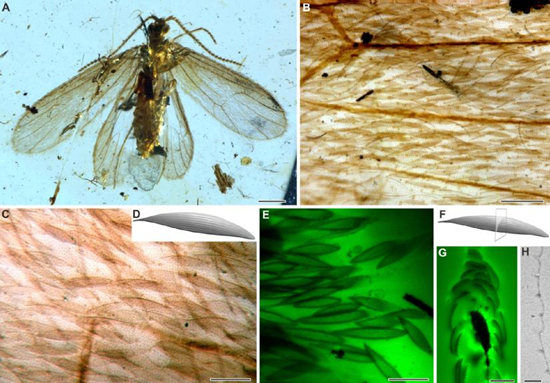
Wang Bo, a researcher from Nanjing Institute of Geology and Paleontology of the Chinese Academy of Sciences told Xinhua that this was the earliest known structural color of insects, pushing the record backward at least for 130 million years.
"It has demonstrated that nanometer-level optical structures can be preserved in Mesozoic amber, opening a window for restoring the structural colors of ancient animals and plants."
